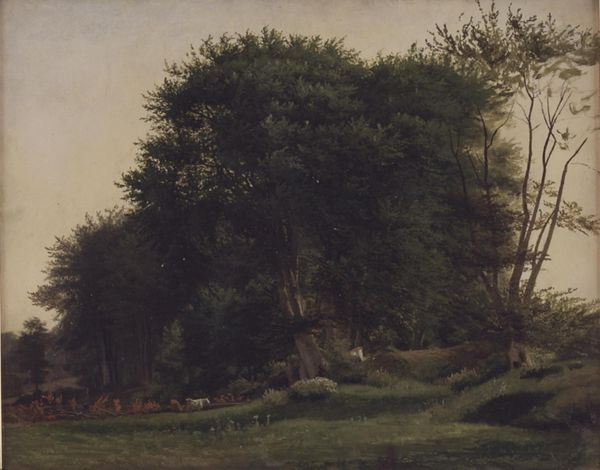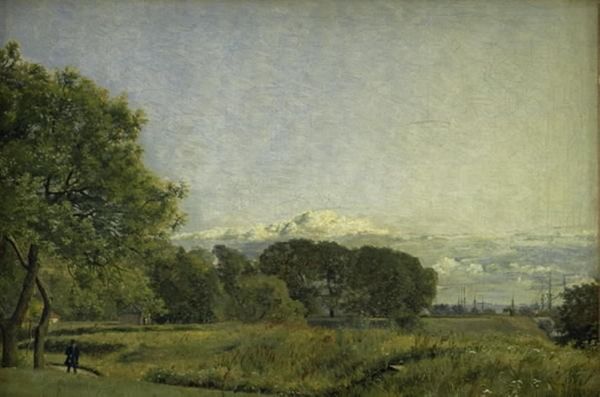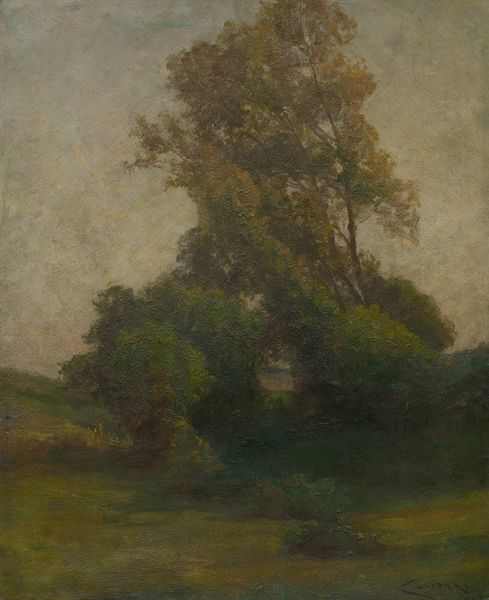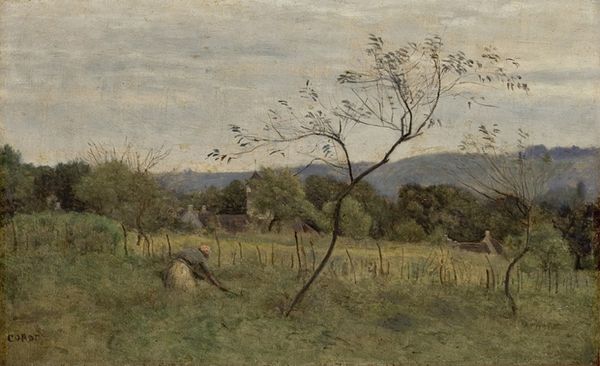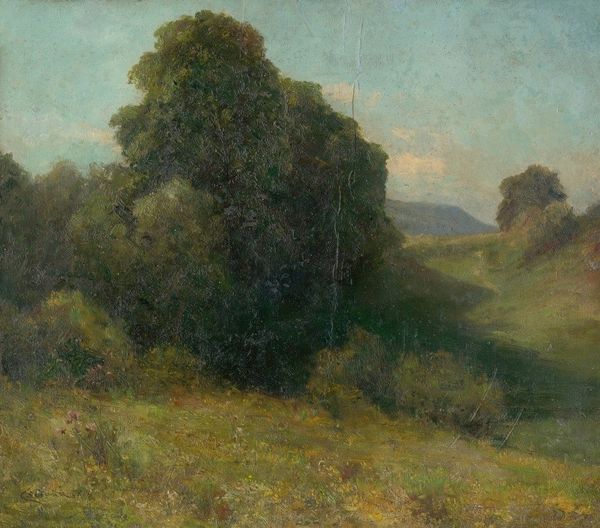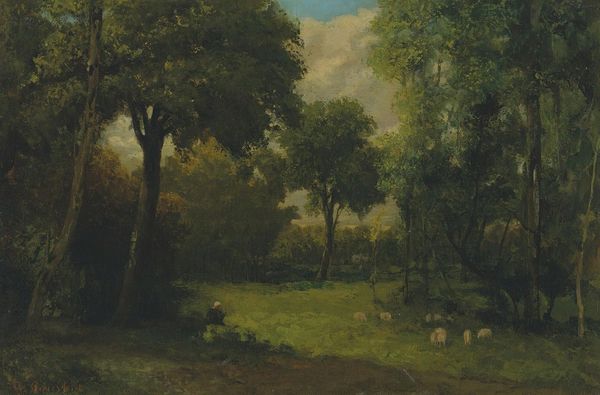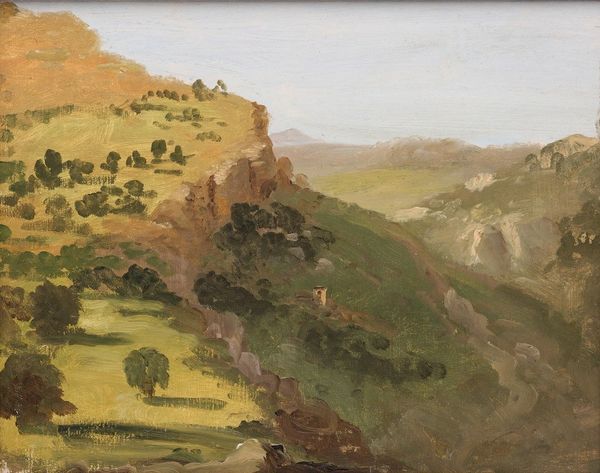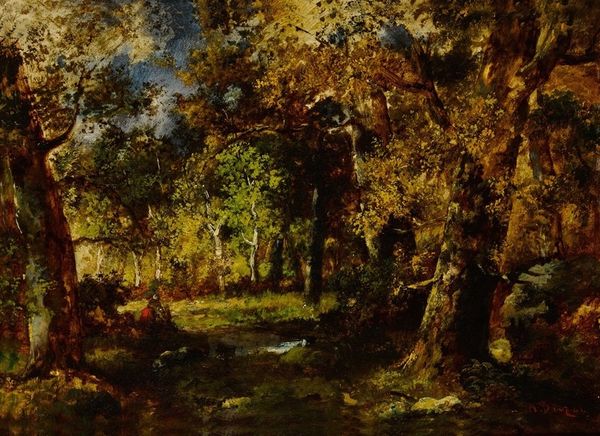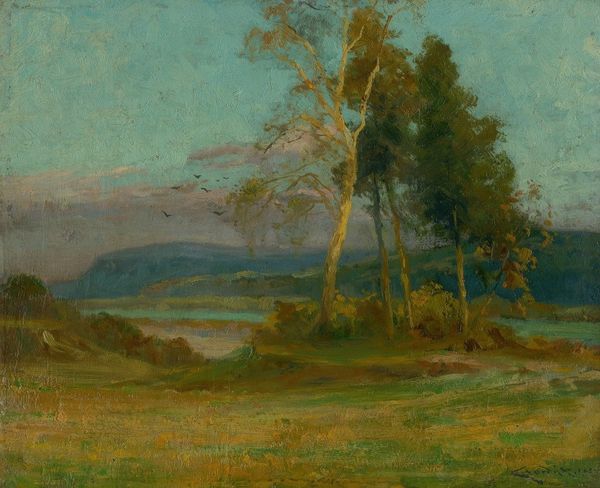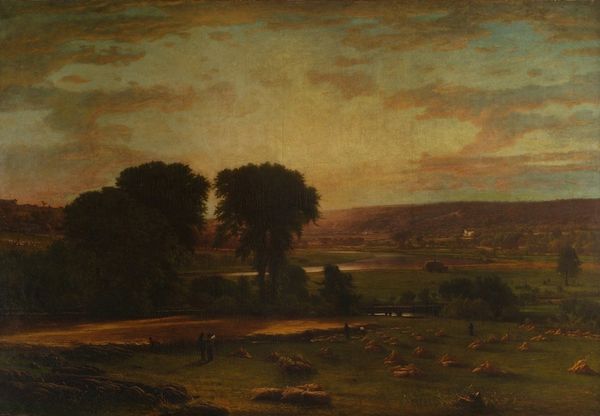
painting, oil-paint
#
water colours
#
painting
#
oil-paint
#
landscape
#
nature
#
romanticism
#
realism
Dimensions: 14 cm (height) x 17.5 cm (width) (Netto)
Curator: Standing here before Dankvart Dreyer’s “Trees at Vissenbjerg, Funen,” painted in 1846. It’s an intimate oil-on-canvas landscape held here at the SMK. Editor: It’s very verdant; the oil paint application, rather thick in places, lends a kind of immediacy. I can almost smell the damp earth. What immediately strikes me is the...labor it evokes, ironically through its subject of natural abundance. Curator: I feel it, too. There's a sort of contained wildness in it, almost yearning, captured by the brushstrokes. Considering that it's Denmark in the 1840s, and thinking about Dreyer trying to carve a niche for himself, his close studies from nature and embrace of the unpicturesque suggests, to me, that this place means something, some respite. The making involved hours spent en plein air – it's pretty immersive! Editor: It certainly speaks to Dreyer’s immersion and sustained labor, lugging paint and canvas outdoors, likely on foot or perhaps with rudimentary cart technology. That physicality impresses, and considering the artistic infrastructure – the supply chains of pigments, canvas preparation – it’s less a vision than it is material extraction transformed by human effort, from soil to the soul as it were. How interesting this nexus nature-culture unfolds, so very materially. Curator: And thinking of Romanticism's influence during the Danish Golden Age and with it, this newfound quest for the sublime lurking everywhere; there's a quiet here that, though not grand, pulls you in— I do agree about the labor and physical effort. There’s something almost meditative that it transmits; labor, for Dreyer here becomes not merely physical exertion, but spiritual devotion and creative fulfillment too! Editor: It’s undeniable. Every textured stroke tells of labor: mining, refinement, transport. Even the brush, shaped from natural fibers or animal hair, marks ecological limits even within art, reflecting a larger, societal exploitation. This devotion and its price is tangible even to our eyes almost 200 years on! Curator: And the very presence of art, this beautiful object we've unearthed from fields, mines, sweatshops... The painting is there to show that connection in our time. It's all there, isn't it? And that makes looking back matter much more. Editor: I completely concur; these paintings ask hard questions and don't necessarily let us, viewers, leave without some reflection and the painting still holds some valuable keys about our condition, both natural and imposed, and by which to gauge and examine that!
Comments
No comments
Be the first to comment and join the conversation on the ultimate creative platform.
